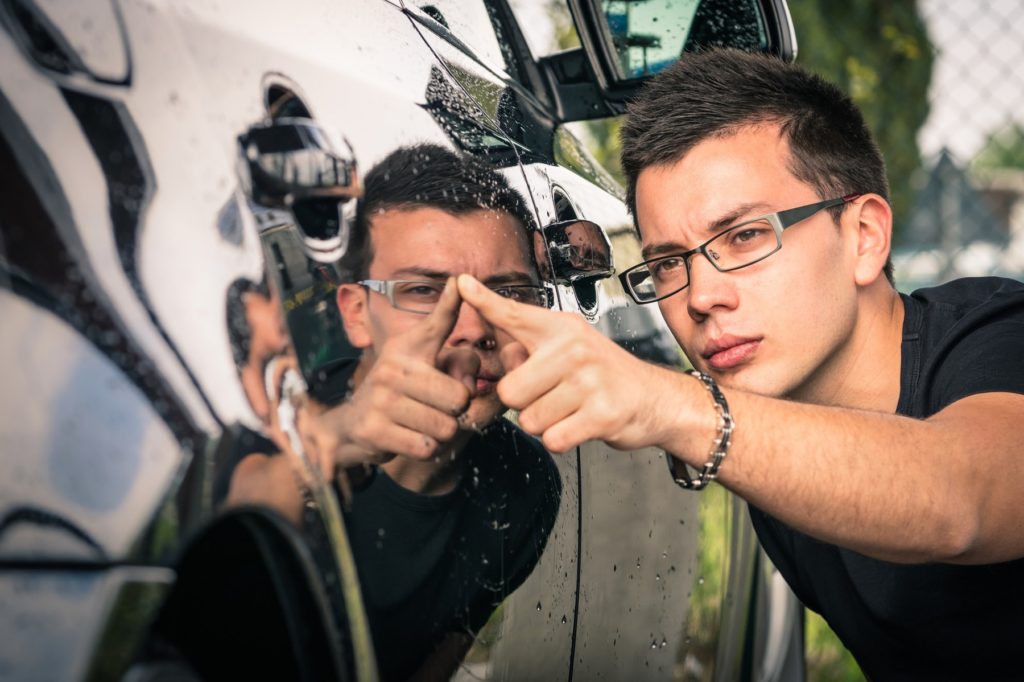
Did you know that new car depreciation can cost you more than $3,000 a year? You can avoid this depreciation by purchasing a used car. You’ll want to make sure you’re getting a good deal on a used car, though, and make sure it doesn’t have any major mechanical problems.
If you are considering a used car, don’t just take the dealer’s word that the car is in great shape and doesn’t have any issues. Do your own inspection or have a qualified mechanic inspect the vehicle for you.
If you’re unsure of what you should be looking for, you’re in the right place. Use this used car inspection checklist to make sure your vehicle won’t leave you high and dry if it breaks down in a few months.
Used Car Inspection Checklist: Start with Some Research
Before you even set foot into a dealership, you should do your research. Figure out what type of car you want, how much you can afford, and what price range you should expect for the type of vehicle you want. Research the car values, fair prices, and go into the transaction with knowledge so you can negotiate.
Once you find a car you like, that’s at a fair price; you’ll want to visit the dealership and take a test drive. Before, during, and after the test drive, you’ll want to be looking and listening for different things.
Here’s a comprehensive list of what to look and listen for:
The Basics
Make sure the owner’s manual is provided, that a vehicle history report is provided (preferably including a service history), and make sure that it appears the mileage is correct and the odometer hasn’t been tampered with.
Interior
Start with the interior and do a once-over. Make sure there aren’t any rips, stains, or other blemishes on the seats and dashboard. Take a big whiff—how does the car smell?
Next, check out the windows, door locks, and dashboard controls. Make sure they all work properly and don’t make any concerning noises.
Turn on the climate control and test all of the levels as well as the heat and the air conditioning. Make sure the heat is blowing warm air, and the AC is blowing cool air. Are there any funny noises?
You should also turn on all of the other controls, like the windshield wipers, power mirror controls, radio, and turn signals.
Finally, check out the trunk area and if there is a spare tire stored there, examine its condition and make sure all necessary tools that should be included are there.
Exterior
Next, check out the exterior of the car. Look for obvious dents, dings, rust spots, or paint chips. Do any of the panels appear to be a different colour than the others?
Check out the tires and their tread and make sure they are at the proper pressure, make sure the lights are working properly and not cracked, and ensure that the key works in each of the locks.
Underbody
To check the underbody, you will likely need to enlist the help of a mechanic or someone who can put the car up on a lift.
Once you can see the underbody, look for any signs of fluid leaks, rust or other damage in the wheel wells or the underbody, and see if the radiator is wet from the coolant.
Examine the brakes and brake pads to ensure that they don’t need to be replaced. Also, look for any leaks of brake fluid around the drums and calipers.
Engine
Pop the hood and take a look at the engine and other parts under the hood. Look for cracks in any belts, make sure the hoses aren’t stiff or brittle, and examine the battery clamps. If they are corroded or the battery is more than 4 years old, you may need to replace this.
Check for fluid leaks and also check the fluid levels to make sure they are where they should be, including power steering fluid, brake fluid, coolant, oil, and transmission fluid. If there are oil change stickers, see how up-to-date the car is on its regular service, which can improve its performance.
Powertrain
Pay attention when you start the car. If you turn the key to the on position, do the warning lights come on? When you start it all the way, does it start easily? Are there any warning lights that stay on, such as the check engine light or tire pressure monitor?
For an automatic transmission, make sure the car smoothly slides into gear. If it’s a manual transmission, depress the clutch and see if it is stiff or jerky or sticks.
During the Test Drive
Pay attention during the test drive. Are there any funny noises? Does a car with an automatic transmission change gears smoothly when appropriate? How do the brakes work? Are they squeaky? Do you have to jam your foot on the brake pedal to stop the car?
How does the car handle bumps at normal speeds? When driving on the highway, does the car vibrate in any way? Is the steering wheel easy to maneuver? Does the car pull to either side, indicating that the alignment may be off?
If you can take a friend with you, have them follow you on the test drive. They can tell you if anything looks off while you are driving, such as wobbly wheels or any smoke coming from the exhaust.
License to Drive
No car will be perfect, especially one that is pre-owned. However, this used car inspection checklist should ensure that you get a car that won’t nickel and dime you as soon as you drive it off the lot.
If you are in the market for a used car, check out our inventory of used and certified pre-owned vehicles.
